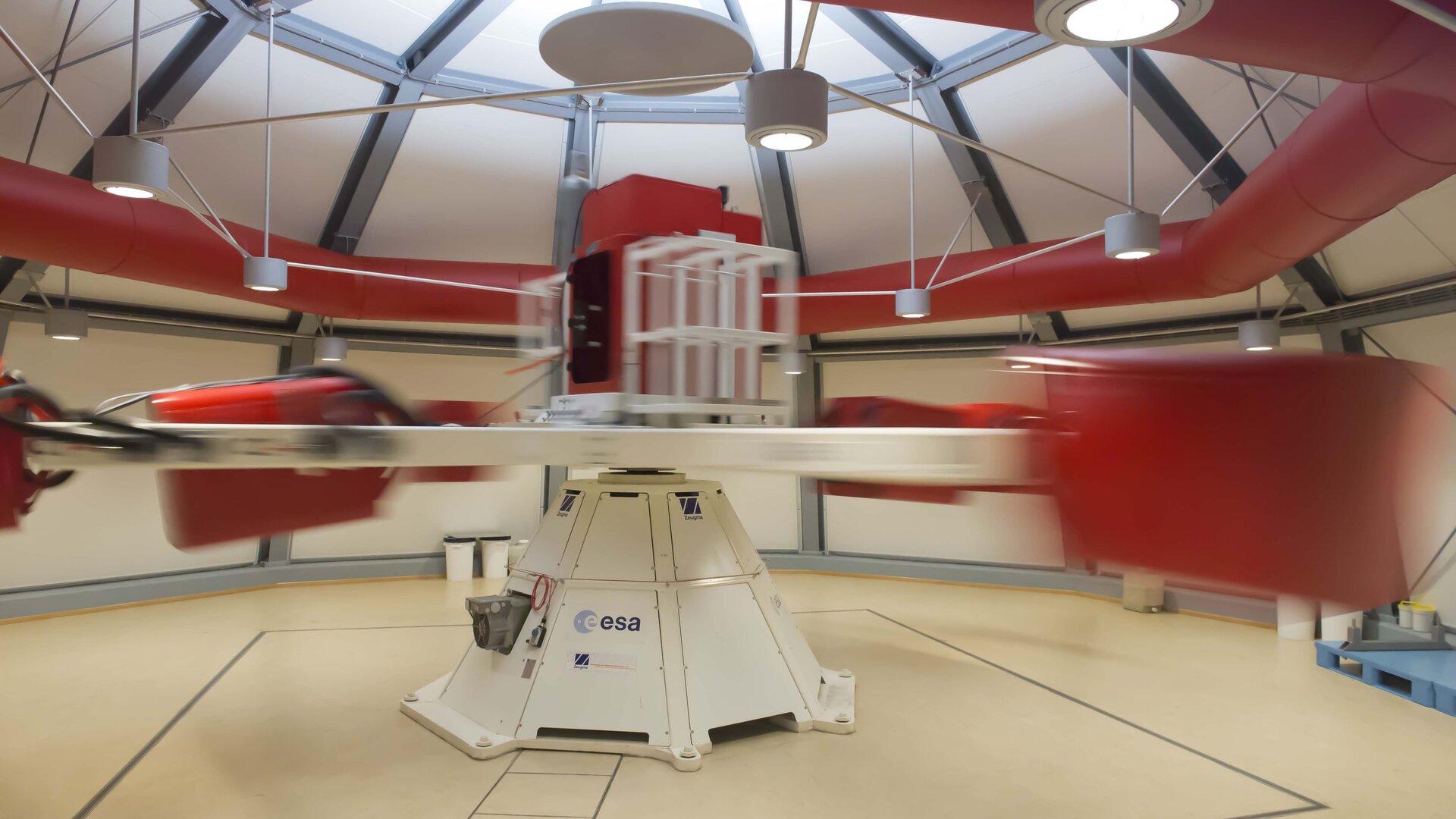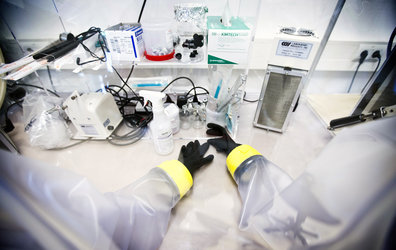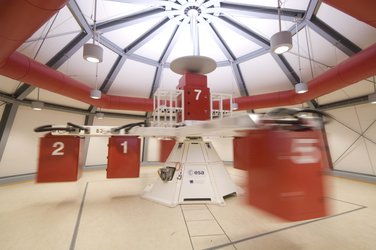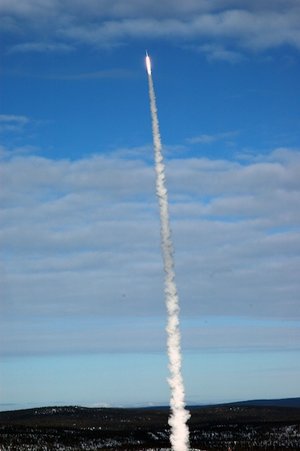Molten metals in spin cycle on ESA’s centrifuge
The experimenters stared through bulletproof glass at the whirling 8 m-diameter centrifuge. Never mind the shaking or stirring of drink cocktails – what happens when you spin a cocktail of molten metal?
ESA’s Large Diameter Centrifuge provides research teams with easy access to hypergravity. Based at ESA’s technical centre in Noordwijk, the Netherlands, it can spin at up to 67 revolutions per minute, producing gravity levels of up to 20 times Earth normal in the gondolas at the end of its four arms.
This time around, one of the gondolas contained a special furnace filled with a molten combination of titanium and aluminium. After around an hour’s spinning, the alloy was allowed to cool and solidify over 15 minutes.
Afterwards, the titanium aluminide was removed to see how the newly formed metal’s microstructure had been affected by a gravity level eight times stronger than Jupiter’s.
“While lightweight, titanium aluminide is strong and corrosion-resistant,” explained Laszlo Sturz of the Access company, a spin-off of Technical University of Aachen in Germany, taking part in the research.

“In particular, its strength increases with temperature, making it particularly promising for building aerospace and automotive engine elements as well as other moving parts.
“Right now, titanium aluminide parts are cast in various ways, including centrifugal, where a ceramic mould is spun as the alloy cools. But such manufacturing follows a trial-and-error approach.
“Our project aims at creating a detailed mathematical model of how solidification is influenced by changing gravity levels, to help in optimising future casting technology.”
Gravity-driven convection in the molten metal influences the solidification: change the level of gravity and the microscopic alloy grains should change their size, too.
While differing levels of hypergravity can been accessed through the ESA’s centrifuge, microgravity casting will be tested next year during the 10–15 minutes of weightlessness available on the flight of a suborbital rocket.
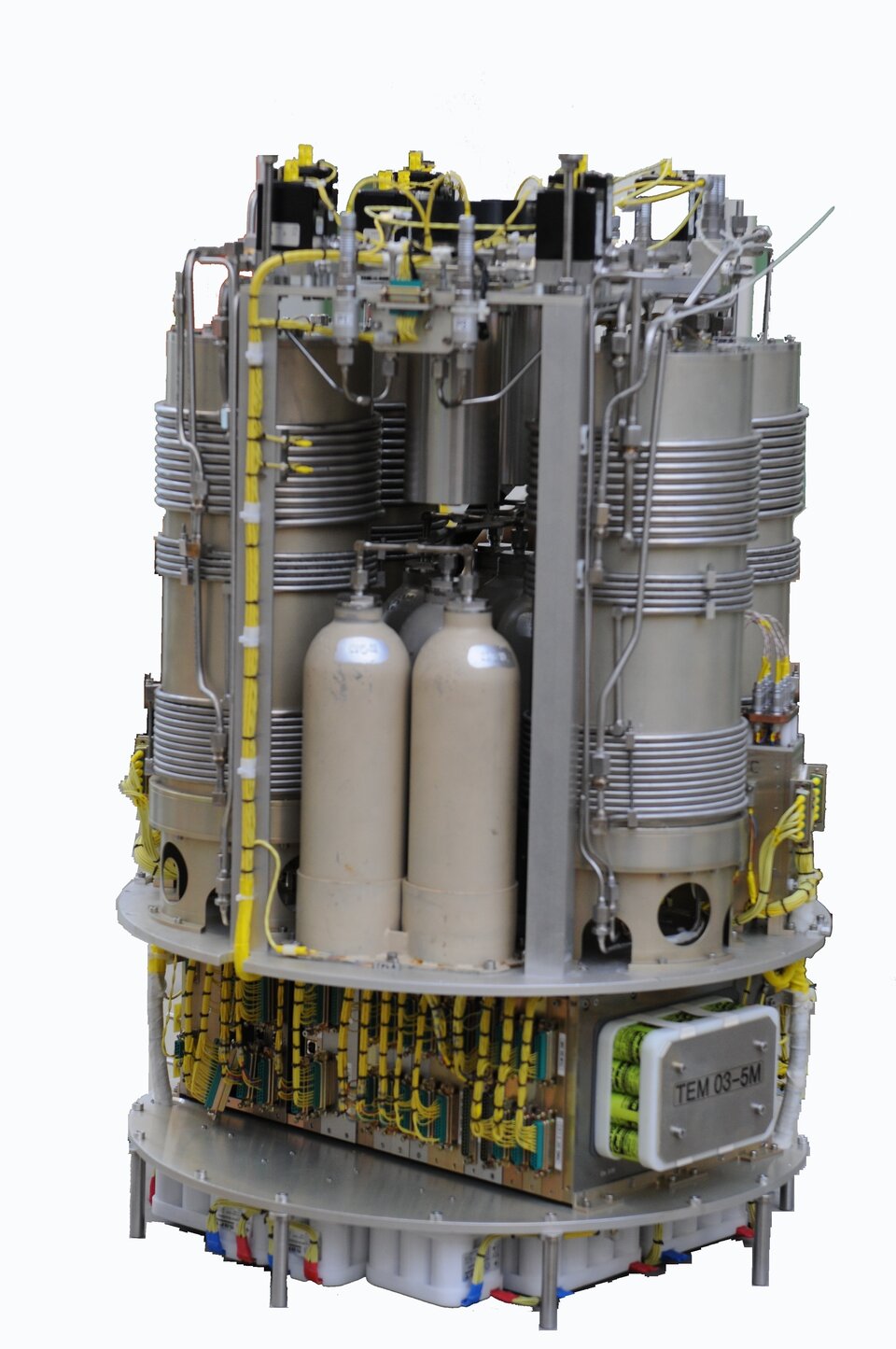
A quartet of casting furnaces will be flown on the Maxus rocket.
“This centrifuge campaign is also serving to qualify them for flight,” said ESA’s Antonio Verga.
The challenge was to design a self-contained furnace that can heat up to the 1700°C required on the inside while its outermost skin remains at no more than 70°C.
The chamber where electrical heaters melt the alloy is surrounded by ceramic heatshielding and buffeted by inert argon gas, with water coolant pipes threaded around the cylinder’s exterior.
Temperature sensors will relay realtime data to eager researchers throughout the process.


